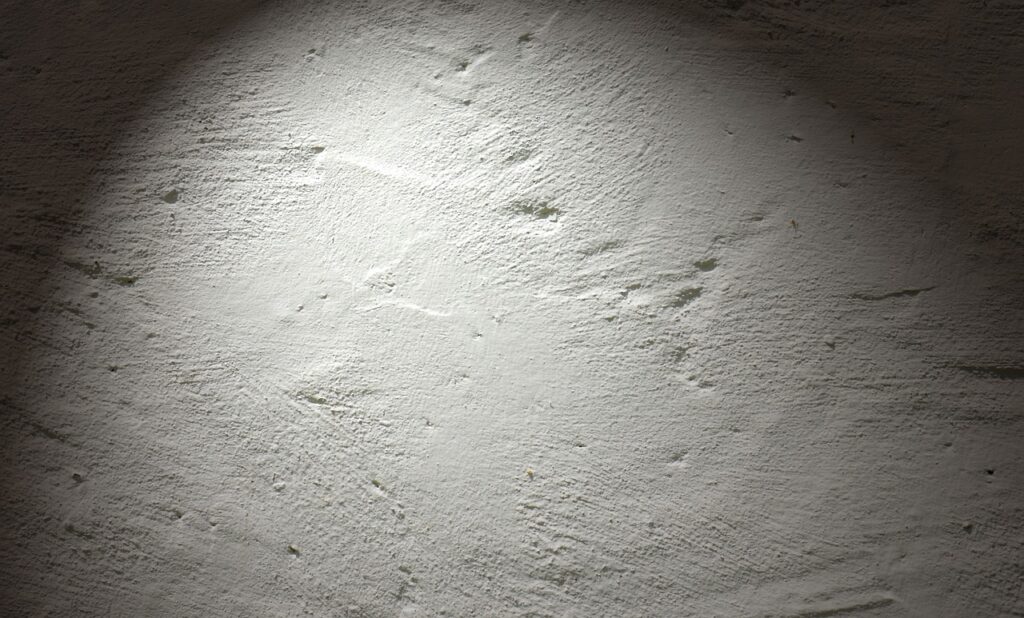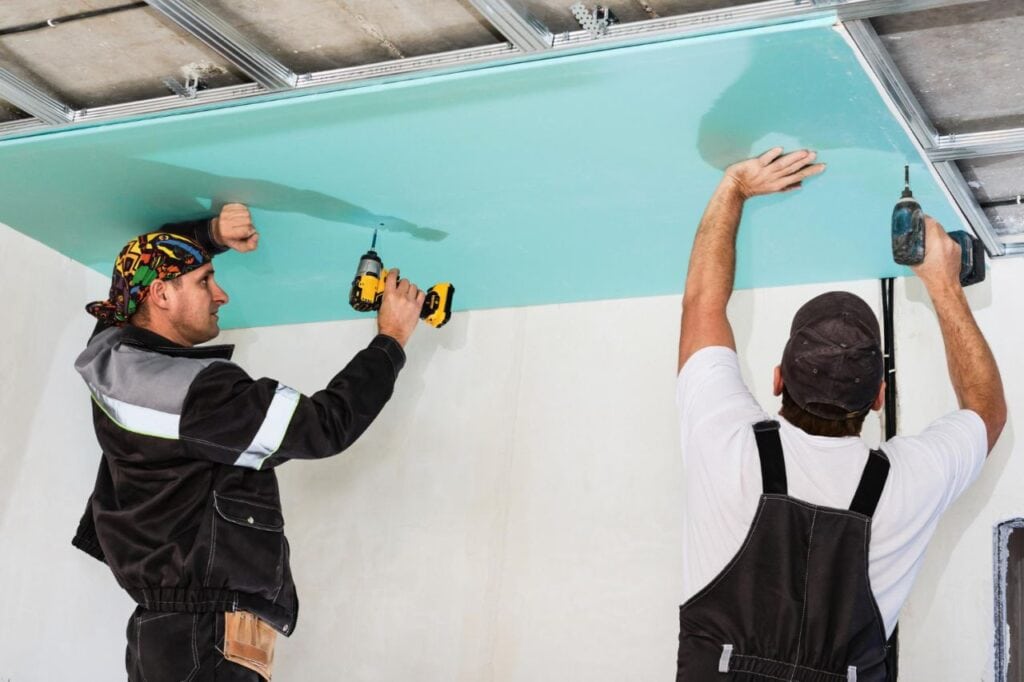Have you had enough of how boring and unappealing your ceiling looks? Do you wish to improve the environment in general? Stop right there! This article will discuss how changing to a plaster ceiling can improve the quality of your home or office.
Many people need help because their ceilings are either old, uninspired or lack real style.
Common problems include unsightliness, flaws like cracks, and a limitation of freedom in terms of design. In addition, ceilings that are plain and boring might detract from the aesthetic appeal of a room.
Ceilings can lose their beauty and structural soundness as they age and develop flaws like cracks, uneven surfaces, and water damage.
In addition, your design options are restricted by the limitations imposed by traditional ceilings, which cannot easily adapt to other architectural styles.
Plaster ceilings may be installed to solve these issues efficiently. The sleek and sophisticated look of a plaster ceiling may completely transform the aesthetics of a room.
With so many options, you may find the perfect texture and pattern combination to round out your home's decor. Plaster ceilings also hide flaws and blemishes for a more polished and professional look.
The plaster's smooth surface conceals imperfections, making the wall more aesthetically pleasing. In addition, you may make your ceiling uniquely yours with the countless design options available for plaster.
Plaster provides for various ceiling designs, including coffered and vaulted ceilings, elaborate patterns and ornate mouldings.
What Are The Pros of Plaster Ceilings?
Ceilings and walls that were either exquisitely textured or perfectly smooth were typically made of plaster before the 1950s. However, even before then, plaster was widely used as a building material, with historical documents attesting to its widespread application for finishing internal brickwork as far back as the Roman Empire.
By the late 1960s, alternative materials had become popular that could achieve similar finishes with less effort and fewer "skilled" hands, and plaster had fallen out of favour.
Plaster's once-exalted standing as a first-choice finishing material gradually declined as widespread awareness of health concerns associated with older construction materials spread.
Plaster has earned a stellar reputation as a risk-free building material recently.
Therefore, it might not be the primary thing you think of when you picture a ceiling or panelling project.
Still, it certainly has remained in the public consciousness and the wide variety of possibilities available regarding interior design.
Some may see Plaster as archaic or even antique, but its work has a charming appeal that is difficult to replicate. It has an understated beauty and a rustic allure that needs to be more robust in today's popular styles. For this reason, ceilings made of traditional plaster are seeing a renaissance.

It's easy to figure out why there's been such a consistent uptick in demand for plasterwork recently. It's a glaring illustration of how good taste will always triumph over practicality. The benefits of plaster that make it ideal for plaster ceilings are as follows:
Advantages Of Plaster Ceiling
Aesthetics
Adding a plaster ceiling may do wonders for a room's aesthetics. They come in different styles, textures, and patterns, opening up endless possibilities for ceiling decoration.
Customizability
Plaster is versatile and can be altered to fit a wide range of aesthetic needs. In addition, they provide designers with many leeways because they may be shaped into any number of curves, forms, and artistic patterns.
Durability
Plaster is strong enough to last through everyday use. If constructed and maintained correctly, plaster ceilings can last for decades without deteriorating.
Sound insulation
Because of its high sound-absorbing capacity, plaster is frequently used in noise-sensitive settings. It lessens the echoes and reverberations around you, making your environment more pleasant.
Fire resistance
Plaster's built-in resistance to fire is a useful safety feature. It won't spread the fire and can help keep it under control, giving firefighters more time to get to the scene.
Easy maintenance
Ceilings made of plaster are simple to keep tidy. They can be wiped or dusted clean with a damp cloth.
What Are The Cons of Plaster Ceilings?
External ceilings are subjected to much harsher conditions than their interior equivalents. Therefore, further safeguards against the elements are necessary.
It's crucial to identify and manage the various concerns that can occur on external ceilings to ensure the ceiling's continued integrity and usefulness.
Condensation on the plasterboard is common in rooms with an exterior ceiling. Warm air condenses onto a colder surface when it touches it. This can be a serious issue for places where humidity and temperature swings are common.
If condensation remains on the plasterboard, it will eventually cause water stains, mould growth, and material deterioration.
Condensation can form not just on the plasterboard of an external ceiling but also on the frame or roofing.
This occurs when water from the roof or the environment penetrates the ceiling structure and drips onto the plasterboard below.
Water damage from persistent condensation can weaken the ceiling and threaten its structural integrity.
Therefore, preventing condensation and protecting the exterior ceiling requires proper waterproofing and efficient drainage systems.
Another potential problem with outdoor ceilings is water seepage via the paint system.
Water can cause discolouration, peeling, and even structural damage if it seeps through layers of paint or protective coating on the ceiling surface that was not properly applied or degraded over time. To guarantee the paint system continues sealing the exterior ceiling against water infiltration, it must be inspected and maintained regularly.
The joints often become distorted in exterior ceilings. Changes in humidity, temperature, or structural movement can cause the joints between ceiling panels or sheets to shift out of place.
This can cause spaces to appear, uneven floors, and structural damage. By using the right jointing materials and reinforcement throughout the installation process, joint distortion may be kept to a minimum, and the exterior ceiling's overall stability can be preserved.
When it comes to exterior ceilings, sinking plasterboard is another common problem.
Eventually, the plasterboard will sag or bend under the combined weight of the ceiling materials and external conditions like moisture and temperature changes.
As a result, the ceiling's visual appeal suffers, and underlying structural problems may exist. Plasterboard sagging can be avoided or fixed by reinforcement techniques to prolong the life of the exterior ceiling, such as additional framing or support systems.
Exterior ceilings are not immune to mould growth concerns with high humidity or moisture levels.
Mould spores can land on the plasterboard surface, grow, and cause problems, including discolouration, musty odours, and even health problems if the conditions are right.
However, mould growth on outside ceilings can be prevented through adequate ventilation, mould-resistant materials, and moisture control.
When the nails or screws used to secure the ceiling materials become loose or stick out of the surface, this is known as fastener popping. Moisture, temperature changes, and faulty fastening can cause this.
Popping fasteners undermines the ceiling's stability and present safety hazards. Preventing this problem requires regular inspection and maintenance, as well as the use of suitable fasteners and installation methods.
Minimum Conditions In Plastering Ceiling
Siniat suggests the below minimum criteria be met when utilising plasterboard for exterior ceilings.
- You must ensure that the plasterboard substrate, especially the wind, can take the weight. Ceilings suspended from the ceiling should have down-struts installed to prevent lifting.
- Plasterboard ceiling cavities need to be well-ventilated. Steel framework may be less long-lasting if exposed to constant wind near saltwater.
- Thermal insulation and sarking (reflective foil insulation) can help with temperature regulation, wind pressure, and condensation management. Insulation with a foil backing is highly recommended for usage beneath a metal roof.
- Avoid water, extended high humidity, sea spray, and wet environments when working with plasterboard and mixtures.
- After the roofing material has been properly fitted and sealed, the wallboard and plaster compositions should be put up.
- Nails cannot be used in installing the ceiling plasterboard, so screws must be used instead. There may be a need for more screws in windy places.
- Use screws with a Class 3 rating or higher if possible, or take precautions to prevent corrosion. It's important to remember that galvanised or Zincalume-coated steel can't be fastened with stainless-steel hardware.
- Leave at least 100 millimetres (mm) between the verandah beam or masonry lintel and the exterior ceiling lining. Protect yourself from wind-driven rain if this clearance is impossible to attain.
- Siniat suggests using 10mm Spanshield, 13mm Mastashield, 10mm Opal, and 13mm or 16mm Fireshield plasterboard for exterior ceilings. Watershield 13mm, TruRock 13mm, or TruRock 16mm are good options for increased waterproofing. Trurock HD is highly recommended due to its exceptional mould resistance.
- The maximum allowed distance between ceiling frames is 450mm. Frame and screw spacing should be taken according to the External Ceilings Maximum Screw Spacing Table. It is also important to back-block all plasterboard joints.
What Is The Durability and Longevity of Plastering Ceiling?
Plastering ceilings are less long-lasting and resilient than many would want. Plaster ceilings can crack, slump, or even fall over time, which can be inconvenient and dangerous.
Possible causes include shoddy construction, water seepage, structural movement, and substandard materials. These issues can be difficult for homeowners since fixing or replacing the damaged plastering takes time, effort, and money.
If you properly build and maintain your plaster ceiling, it will survive for decades. Several factors determine how long a plastering job will last:
Quality Of Materials
If you want your plaster and other materials to last, invest in the best you can find. Choosing high-quality brands and the best materials for your ceiling design can help it last longer.
Maintenance
Plastered ceilings need regular upkeep and prompt repairs to last for many years. However, ceilings can be kept in good condition for much longer if any damage indicators, like cracks or loose plaster, are repaired immediately.
Technique in Installation
The longevity of a plastered ceiling may be affected by the type of plaster employed, the amount of time given for drying, and the thickness of the applied coat. Plastering is a tricky job and requires the expertise of professionals.
Environmental Conditions
Plaster's resistance to the wear and tear that comes with temperature swings, humidity, and moisture in the air can vary greatly. As a result, cracks or other damage may develop after being subjected to excessive dampness and frequent temperature variations.
Conclusion
This article discusses why installing a plaster ceiling can improve the quality of a home or office. Common problems include unsightliness, flaws, and a limitation of freedom in terms of design.
Plaster ceilings can transform the aesthetics of a room and hide flaws and blemishes for a more polished and professional look.
They also provide for various ceiling designs, such as coffered and vaulted ceilings, elaborate patterns and ornate mouldings.
Plaster has earned a stellar reputation as a risk-free building material recently, making it a popular choice for interior design projects.
Plaster ceilings are seeing a renaissance due to their attractive appeal and rustic allure. Advantages of plaster include aesthetics, customization, durability, sound insulation, fire resistance, and easy maintenance.
Cons include condensation on the plasterboard, which can cause water stains, mould growth, and material deterioration.
It is important to identify and manage these concerns to ensure the ceiling's continued integrity and usefulness. Condensation can form on the plasterboard of an external ceiling, as well as on the frame or roofing.
Water seepage through the paint system can cause discolouration, peeling, and structural damage. Joints can become distorted due to changes in humidity, temperature, or structural movement.
Plasterboard sagging can be avoided or fixed by reinforcement techniques. Mould growth can be prevented through ventilation, mould-resistant materials, and moisture control. Fastener popping is a problem caused by moisture, temperature changes, and faulty fastening.
To prevent this, regular inspection and maintenance is needed, as well as suitable fasteners and installation methods.
Minimum conditions must be met when utilising plasterboard for exterior ceilings, such as being well-ventilated, having thermal insulation and sarking, and avoiding water, high humidity, sea spray, and wet environments.

The most important details are to use Class 3 or higher screws, leave at least 100mm between the verandah beam or masonry lintel and the exterior ceiling lining, use 10mm Spanshield, 13mm Mastashield, 10mm Opal, and 13mm or 16mm Fireshield plasterboard, and back-block all plasterboard joints.
Plaster ceilings are less long-lasting and resilient than many would want, but if properly built and maintained, they will last for decades. Investing in the best materials and maintaining them regularly can help a plastered ceiling last longer.
Technique in installation and environmental conditions can also affect the longevity of a plastered ceiling. Professionals are needed to ensure the job is done correctly.
Content Summary
- Installing a plaster ceiling can improve the quality and aesthetics of your home or office.
- Plaster ceilings can hide flaws and blemishes for a polished and professional look.
- Plaster ceilings offer various design options, including coffered and vaulted ceilings, patterns, and ornate moldings.
- Plaster ceilings were widely used before the 1950s and are now experiencing a renaissance in popularity.
- Plaster ceilings are highly customizable and can be shaped into any curves or forms.
- Plaster ceilings are durable and can last for decades if constructed and maintained correctly.
- Plaster ceilings have high sound insulation properties, reducing echoes and creating a pleasant environment.
- Plaster ceilings have built-in fire resistance, helping to control and prevent the spread of fires.
- Plaster ceilings are easy to maintain and can be cleaned with a damp cloth.
- External plaster ceilings require additional safeguards against the elements, such as proper waterproofing and drainage systems.
- Condensation on exterior plaster ceilings can lead to water stains, mold growth, and material deterioration.
- Water seepage through the paint system can cause discolouration and structural damage to exterior plaster ceilings.
- Joints in exterior plaster ceilings can become distorted due to humidity, temperature, or structural movement.
- Plasterboard sagging is a common problem in exterior ceilings due to moisture and temperature changes.
- Mould growth can occur on exterior plaster ceilings in high humidity or moisture levels.
- Fastener popping can undermine the stability of plaster ceilings and requires regular inspection and maintenance.
- Minimum conditions for plastering exterior ceilings include ensuring the substrate can bear the weight, ventilation, and thermal insulation.
- The choice of plasterboard and screws is important for installing exterior ceilings in windy areas.
- High-quality materials, regular maintenance, and proper installation techniques contribute to the durability of plaster ceilings.
- The longevity of a plaster ceiling depends on factors such as the quality of materials used and environmental conditions.
- Choosing high-quality plaster and materials can extend the lifespan of the ceiling.
- Regular upkeep and prompt repairs are necessary for maintaining plaster ceilings.
- The type of plaster used, drying time, and coat thickness can affect the longevity of the ceiling.
- Plaster ceilings' resistance to wear and tear varies based on environmental conditions.
- Proper installation by professionals is crucial for the longevity of plastered ceilings.
- Plaster ceilings can crack, slump, or fall over time if not constructed properly or subjected to water seepage and structural movement.
- Damage indicators such as cracks and loose plaster should be repaired immediately to maintain the ceiling's condition.
- Plaster ceilings offer a wide range of styles, textures, and patterns for endless possibilities in ceiling decoration.
- Plaster ceilings provide a sleek and sophisticated look that can transform the aesthetics of a room.
- Plaster ceilings offer fire resistance, sound insulation, and easy maintenance benefits.
FAQs About Plaster Ceilings
Once applied and dried, it is extremely strong and has a slip resistant texture that makes it perfect for floors and ceilings. However, tough coat plaster is not suitable for all interiors, because of its rough surface.
In terms of benchmark rates for plastering jobs, it can cost between $8 to $16 per square metre for the installation of plasterboard and between $15 to $20 per square metre for the supply and installation of plasterboard.

